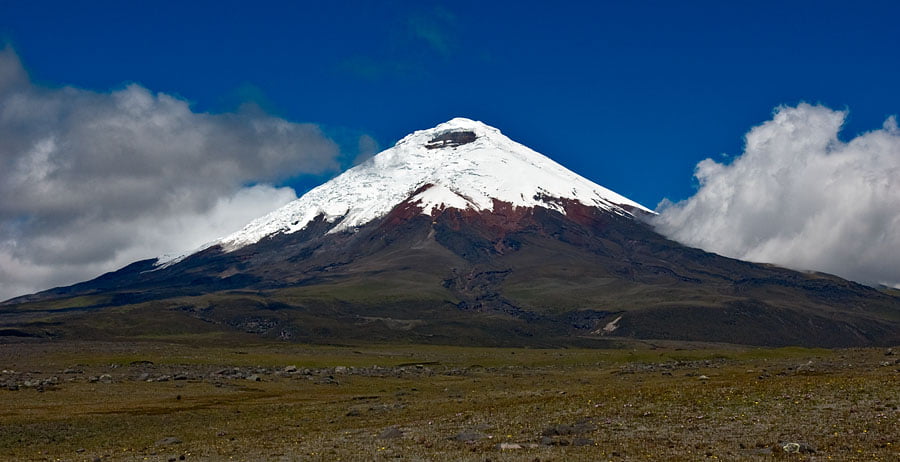The Cotopaxi Volcano in Ecuador is considered one of the world’s most dangerous. Its peak looms over the capitol, Quito and can be seen from the city on a clear day.
Cotopaxi is both very large, and very close to populated areas. And now, Cotopaxi is rumbling.
On Friday, a giant plume of ash erupted from its peak. The volcano continued to stir over the weekend and the government declared a state of emergency. Over 300,000 could be in danger.
This Could Be the Big One
What makes this particular volcano so dangerous is not so much the prospect of spewing lava flows, but a massive flood that it may trigger. Should the volcano blow, it could melt the icecap covering Cotopaxi’s peak, sending rocky, muddy waters down its slopes toward surrounding towns. It could even flood parts of suburban Quito, a city of 2 million people.
The last major eruption, in 1877, destroyed the nearby town of Latacunga, which has a population today of nearly 170,000.
The scene there, as described in this AFP report, seems near panic
Residents in towns and river settlements in Cotopaxi province, just 45 kilometers south of the capital Quito, were told to clear out, said Pablo Morillo, head of the Risk Management Office.
Officials did not specify how many people could be affected by the evacuation order which affects three provinces with towns near the volcano.
In the city of Latacunga, home to about 170,000 people, sirens sounded as residents frantically fled, packing food, water and pets into cars that quickly clogged the roads.
“I was driving near the Cutuchi River and police came out with sirens, alerting us, and moving from house to house to draw people out. The sirens distressed us,” one woman told AFP, without providing her name.
Soldiers could be seen in the streets of Latacunga, along with cars carrying mattresses, motorcycles and other household items.
Authorities have started to evacuate some towns in the flood range, and the mayor of Quito is planning on distributing one million surgical masks to protect people from harmful ash.
Should Cotopaxi blow, it will be a major test of Equator’s disaster risk reduction efforts. In recent years, there has been a growing emphasis by countries in high risk areas (like the Ring of Fire) to take steps to limit the damage caused by an earthquake or volcano. The UN Development Program has a hand in this, but really it is up to local authorities to help mitigate the fallout from a calamity like this.
Hopefully, the next big eruption is still a long way off. But the seismic and volcanic activity this weekend around Cotopaxi most definitely has hundreds of thousands of people on edge.
